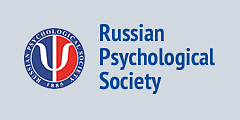Luria’s Legacy in Cultural-Historical Psychology
-
Individual neuropsychological characteristics in patients with juvenile myoclonic epilepsy
-
A comparative clinical study of the effectiveness of computer cognitive training in patients with post-stroke cognitive impairments without dementiaPDF HTML3504“ CITE
Prokopenko S. V., Bezdenezhnykh A. F., Mozheyko E. U., Petrova M. M. (2018). A comparative clinical study of the effectiveness of computer cognitive training in patients with post-stroke cognitive impairments without dementia. Psychology in Russia: State of the Art, 11 (2), 55-67.
copied
-
The correlation between intelligence, creativity and the parameters of sensorimotor integration in children of different ages
-
Psychological security as the foundation of personal psychological wellbeing (analytical review)
-
Neuropsychological analysis of the features of mental development in school age children with mild perinatal hypoxic damage of the nervous system in their anamnesis









